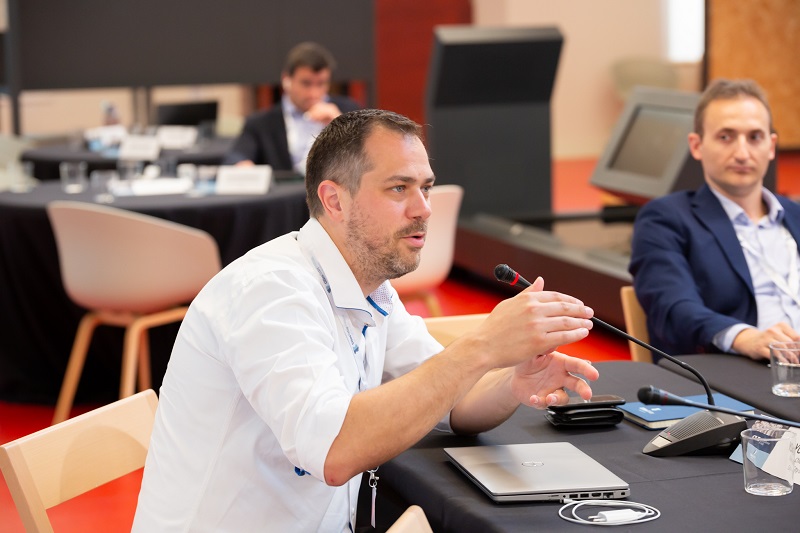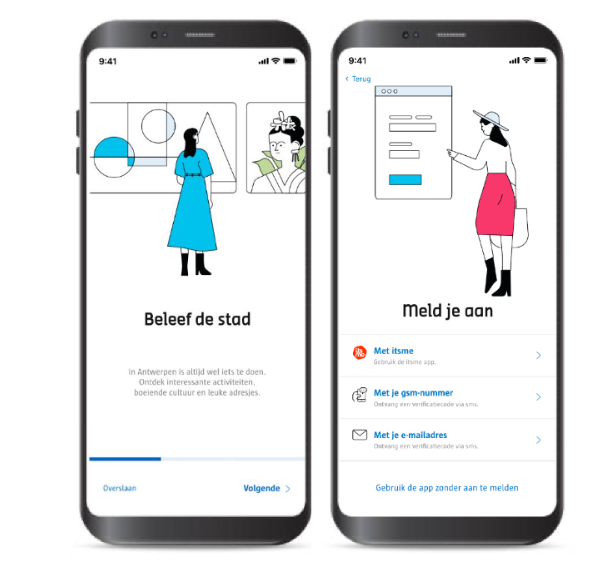
Photo: Youri Segers/Image: Cities Today
Antwerp’s digital lead on the art of city app design
22 June 2022
by Sarah Wray
The City of Antwerp’s forthcoming ‘My Antwerp’ app has been developed natively for mobile devices based on resident research and user-centred design processes.
Youri Segers, Antwerp’s Chief Digital Officer, hopes this approach can overcome some of the common challenges with municipal apps – poor useability and low uptake, particularly by residents who are less comfortable with digital tools.
In this way, the My Antwerp app is part of a multi-pronged push to improve digital inclusion, as well as to streamline city communication overall.
“When we created the digital strategy, one of the things we saw is that every department in the city has its own strategy, has its own way of working. And they were all trying to reach the citizens through their own marketing campaigns,” said Segers, who was speaking at the recent Cities Today Institute City Leadership Forum event in Barcelona.
“One application helps you to [attract more users]. It is very important because you can focus all your communication on one application.”
Cities often adapt their web services to mobile and app versions, but Antwerp took the decision to design mobile-first. One reason for this is that in Belgium, 93 percent of residents have a smartphone, compared to 82 percent that own a laptop and 44 percent with a desktop. The app also aims to meet the needs of different types of residents.
Segers explained: “One target group which is difficult to reach are refugees, and they have nothing except one thing: their smartphone. By providing them web services, most of the time it doesn’t help.”
Keeping it simple
Because cities deliver so many services for residents, digital tools can quickly become complex and hard to use.

This can be transposed to larger screens to drive simplification across the board, whereas working the other way around often has the opposite effect.
A native app also standardises user experience, meaning there are “fewer compromises,” according to Segers. Once residents learn to use the app basics via guided prompts, the rest of the features will be intuitive — unlike when they have to use several disparate web pages.
A further advantage, alongside access to phone features such as the camera and location-based push notifications, is resident engagement, says Segers: “A mobile application gives you two-way communication, it makes it possible for you to interact with your citizens. That’s something a website doesn’t do.”
The design of the app began in January 2021, and it will launch later this year. The process included representative surveys, in-depth interviews and user feedback on designs and prototypes.

Eventually, the app could be used for accessing the library or renting bikes, and external services could be integrated. But Segers is clear that updates will be driven by a relentless focus on the user.
“You need to have a firm voice in the administration to say no to adding some things because if the relevance drops, then the users will drop as well,” said Segers.
Speaking of numbers, the target is for 40 percent of Antwerp’s residents to be using the app by 2025, increasing to 85 percent by 2030.
Segers commented: “I’m quite confident because of how we designed it. And because one of the main things that came out in the research was the inhabitants in Antwerp asked us why we don’t have such an app already.”











